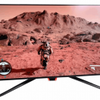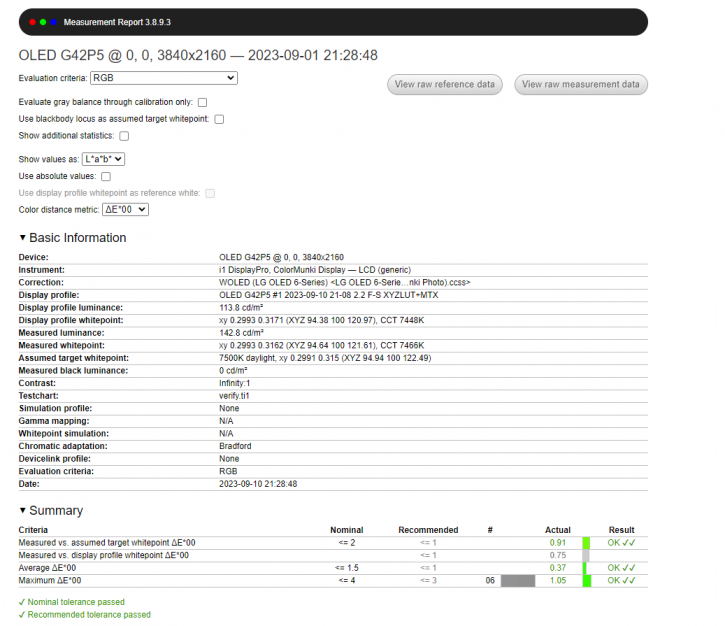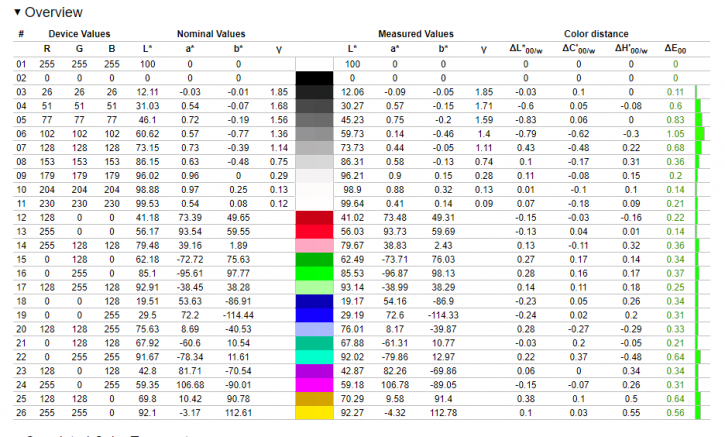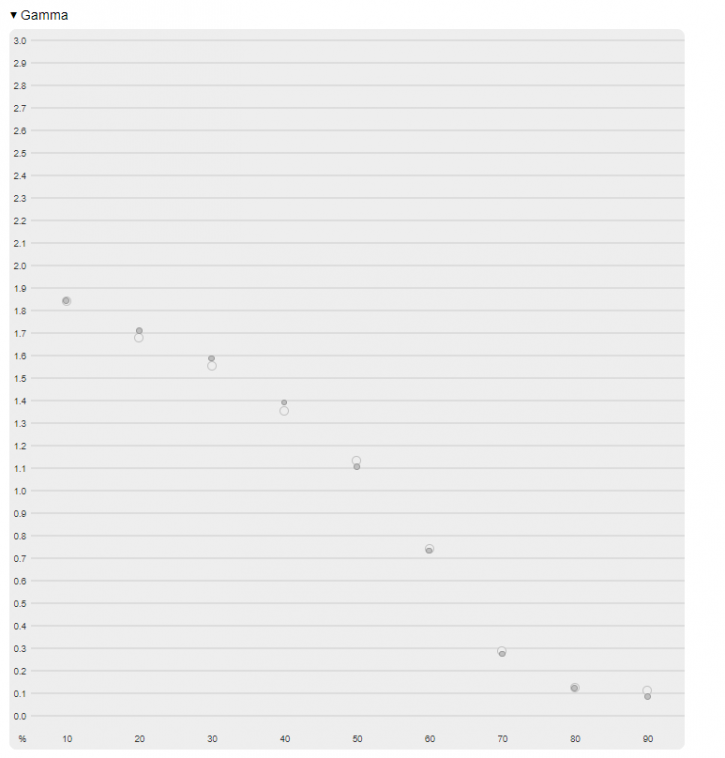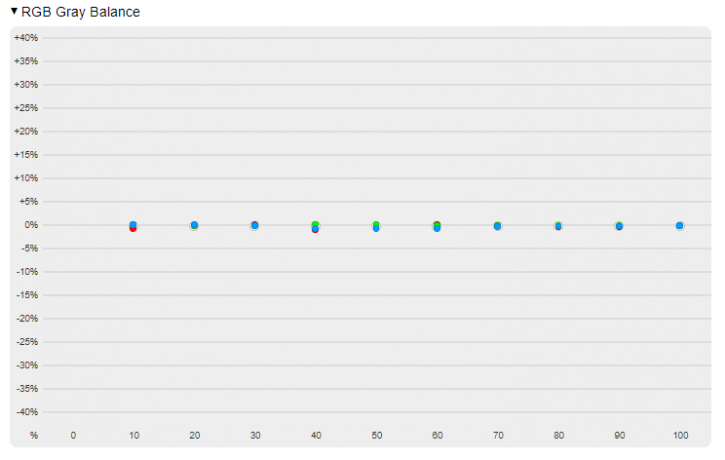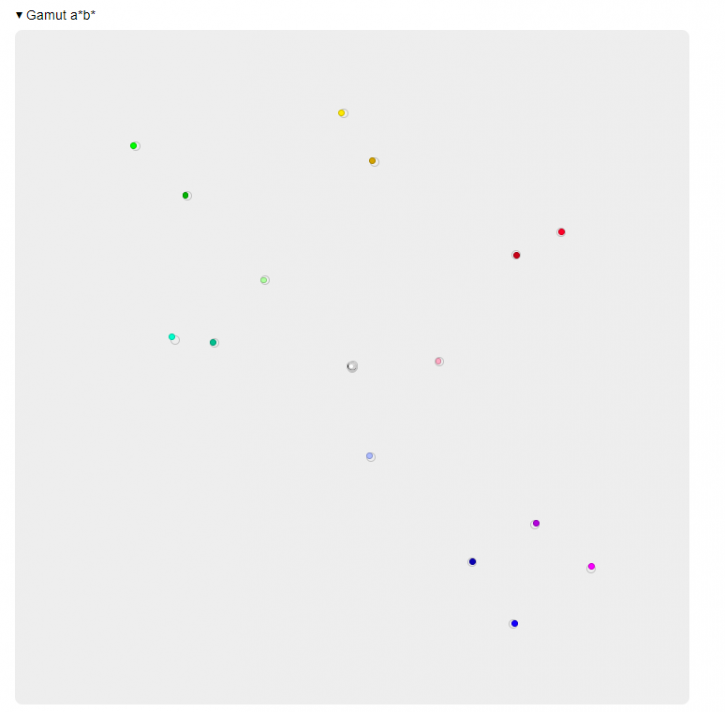Uniformity of backlighting, calibration results, dead pixel check
Uniformity of backlighting
To test the uniformity of the backlighting, screen brightness was set to 160 cd/m². The test was carried out on a calibrated profile. Luminance uniformity was rather good. As you can see, the illumination intensity decreases as you move away from the center. The maximum subsidence is observed in the upper-left lower-right corner, reaching 7%. When analyzing the black field, we found no obvious bleeding. Of course, the presence or absence of "highlights" may differ between different units of this model, but in this case, we can only report a good result for the test sample.
Viewing angles, glow-effect, and pulse width modulation
The viewing angles are great (typical for OLED). OLED panels have greater off-axis image quality than LCDs, although they are not flawless. A minor green shift can be seen at 45 degrees to the sides and from above. However, light output remains very constant, and detail remains consistent. We scarcely noticed anything when we moved off-center in the material. There’s no glow effect.
Calibration results
After calibration, the accuracy of the panel’s color rendition significantly improved. DeltaE deviations reached 0.37 on average (norm - 1.5) and 1.05 on maximum deviation (norm - 4).
Dead pixel check
On inspection, we found no dead or stuck pixels.
